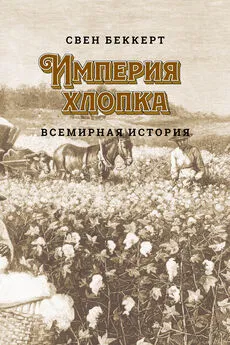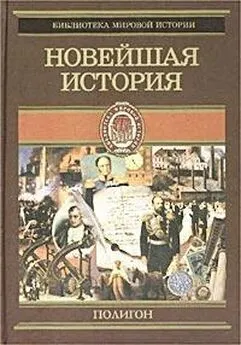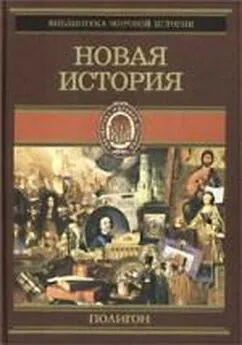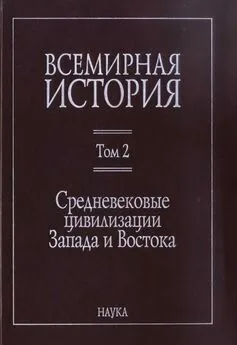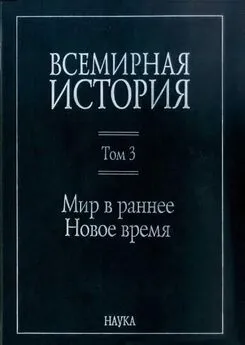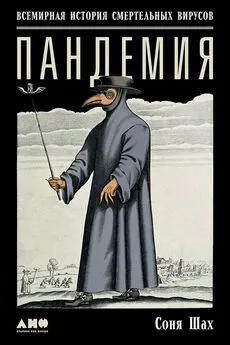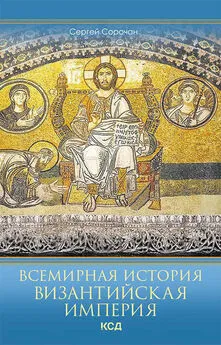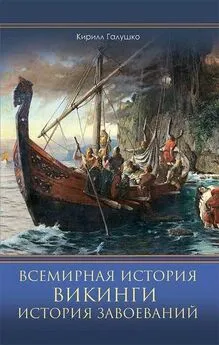Свен Беккерт - Империя хлопка. Всемирная история
- Название:Империя хлопка. Всемирная история
- Автор:
- Жанр:
- Издательство:неизвестно
- Год:неизвестен
- ISBN:978-5-93255-528-6
- Рейтинг:
- Избранное:Добавить в избранное
-
Отзывы:
-
Ваша оценка:
Свен Беккерт - Империя хлопка. Всемирная история краткое содержание
Империя хлопка. Всемирная история - читать онлайн бесплатно ознакомительный отрывок
Интервал:
Закладка:
107
Dispatch from East India Company, London to Bombay, 22 March 1765, in Dispatches to Bombay, E/4, 997, Oriental and India Office Collections, British Library, London, p. 611.
108
Report of the Select Committee of the Court of Directors of the East India Company, Upon the Subject of the Cotton Manufacture of this Country, 1793, Home Miscellaneous Series, 401, p. 1, Oriental and India Office Collections, British Library, London.
109
Inikori, Africans and the Industrial Revolution in England , 430; Inalcik, “The Ottoman State,” 355.
110
M. D. C. Crawford, The Heritage of Cotton: The Fibre of Two Worlds and Many Ages (New York: G. P. Putnam’s Sons, 1924), xvii; парламентские дебаты цит. по: Cassels, Cotton , 1; памфлет процитирован в Baines, History of the Cotton Manufacture , 75; Defoe and McVeagh, A Review of the State of the British Nation , vol. 4, 605–6; Copy of Memorial of the Callicoe Printers to the Lords of the Treasury, Received, May 4, 1779, Treasury Department, T 1, 552, National Archives of the UK, Kew. См.: на ту же тему “The Memorial of the Several Persons whose Names are herunto subscribed on behalf of themselves and other Callico Printers of Great Britain,” received July 1, 1780, at the Lords Commissioners of His Majesty’s Treasury, Treasury Department, T1, 563/72–78, National Archives of the UK, Kew.
111
Цит. по: S. V. Puntambekar and N. S. Varadachari, Hand-Spinning and Hand-Weaving: An Essay (Ahmedabad: All India Spinners’ Association, 1926), 49, 51ff., 58; Inikori, Africans and the Industrial Revolution in England , 431–32; Crawford, The Heritage of Cotton , xvii; Baines, History of the Cotton Manufacture , 79; Wadsworth and Mann, The Cotton Trade , 132; Crawford, The Heritage of Cotton , xvii; Lemire, Fashion’s Favourite , 42; Petition to the Treasury by Robert Gardiner, in Treasury Department, T1, 517/ 100–101, Public Records Office, London; Wadsworth and Mann, The Cotton Trade , 128; Letter of Vincent Mathias to the Treasury, 24 July 1767, Treasury Department, T 1, 457, National Archives of the UK, London.
112
Cousquer, Nantes , 12, 23, 43; Arret du conseil d’etat du roi, 10 Juillet 1785 (Paris: L’Im-primerie Royale, 1785), Andre Zysberg, Les Galeriens: Vies et destiny de 60,000 porcats sur les galeres de France, 1680–1748 (Paris: Sevid, 1987); Marc Vigie, Les Galeriens du Roi, 1661–1715 (Paris: Fayard, 1985).
113
Wadsworth and Mann, The Cotton Trade , 118–19; Examen des effets que doivent produire dans le commerce de France, l’usage et lafabrication des toiles peintes (Paris: Chez la Veuve Delaguette, 1759); Friedrich Wilhelm, King of Prussia, Edict dass von Dato an zu rechnen nach Ablaufacht Monathen in der Chur-Marck Magdeburgischen, Halberstadtschem und Pommern niemand einigen gedruckten oder gemahlten Zitz oder Cattun weiter tragen soll (Berlin: G. Schlechtiger, 1721); Yuksel Duman, Notables, Textiles and Copper in Ottoman Tokat, 1750–1840 (PhD dissertation, State University of New York at Binghamton, 1998), 144–45.
114
Legoux de Flaix, Essai historique, geographique et politique sur l’Indoustan, avec le tableau de son commerce , vol. 2 (Paris: Pougin, 1807), 326; Lemire, Fashion’s Favourite , 3–42.
115
См. также: George Bryan Souza, “Convergence Before Divergence: Global Maritime Economic History and Material Culture,” International Journal of Maritime History 17, 1 (2005): 17–27; Georges Roques, “La maniere de negocier dans les Indes Orientales,” Bibliotheque National, Paris, Fonds Francais 14 614; Paul R. Schwartz, “L’impression sur coton a Ahmedabad (Inde) en 1678,” Bulletin de la Societe Industrielle de Mulhouse , no. 1 (1967): 9–25; Cousquer, Nantes , 18–20; Jean Ryhiner, Traite sur lafabrication et le commerce des toiles peintes, commences en 1766 , Archive du Musee de l’Impression sur Etoffes, Mulhouse, France. См. также: 1758 Reflexions sur les avantages de la librefabrication et de l’usage des toiles peintes en France (Geneva: n. p., 1758), Archive du Musee de l’Impression sur Etoffes, Mulhouse, France; M. Delormois, L’art defaire l’indienne a l’instar d’Angleterre, et de composer toutes les couleurs, bon teint, propres a l’indienne (Paris: Charles-Antoine Jambert, 1770); Legoux de Flaix, Essai historique , vol. 2, 165, 331, цит. по: Florence d’Souza, “Legoux de Flaix’s Observations on Indian Technologies Unknown in Europe,” in K. S. Mathew, ed., French in India and Indian Nationalism , vol. 1 (Delhi: B.R. Publishing Corporation, 1999), 323–24.
116
Dorte Raaschou, “Un document Danois sur la fabrication des toiles Peintes a Tranquebar, aux Indes, a la fin du XVIII siecle,” in Bulletin de la Societe Industrielle de Mulhouse , no. 4 (1967): 9–21; Wadsworth and Mann, The Cotton Trade , 119; Inikori, Africans and the Industrial Revolution in England , 432; цит. по: Philosophical Magazine 30 (1808): 259; цит. по: Philosophical Magazine 1 (1798): 4. См. также: S. D. Chapman, The Cotton Industry in the Industrial Revolution (London: Macmillan, 1972), 12; Philosophical Magazine 1 (1798): 126.
117
Cotton Goods Manufacturers, Petition to the Lords Commissioner of His Majesty’s Treasury, Treasury Department, T 1, 676/30, Public Record Office, London; Dispatch, November 21, 1787, Bombay Dispatches, E/4, 1004, Oriental and India Office Collections, British Library, London.
118
Chapman, The Cotton Industry in the Industrial Revolution , 16.
119
Marion Johnson, “Technology, Competition, and African Crafts,” in Clive Dewey and A. G. Hopkins, eds., The Imperial Impact: Studies in the Economic History of Africa and India (London: Athlone Press, 1978), 262; Irwin and Schwartz, Studies in Indo-European Textile History , 12. Мы знаем, что на протяжении XVIII столетия рабы были самым важным «экспортом» из Африки, составляя от 80 до 90 % от всей торговли. J. S. Hogendorn and H. A. Gemery, “The ‘Hidden Half ’ of the Anglo-African Trade in the Eighteenth Century: The Significance of Marion Johnson’s Statistical Research,” in David Henige and T. C. McCaskie, eds., West African Economic and Social History: Studies in Memory of Marion Johnson (Madison: African Studies Program, University of Wisconsin Press, 1990), 90; Extract Letter, East India Company, Commercial Department, London, to Bombay, May 4, 1791, in Home Miss. 374, India Office, Oriental and India Office Records, British Library, London; Cousquer, Nantes , 32; de Flain is quoted in Richard Roberts, “West Africa and the Pondicherry Textile Industry,” in Roy, ed., Cloth and Commerce , 142.
120
Wadsworth and Mann, The Cotton Trade , 116, 127, 147; Inikori, Africans and the Industrial Revolution in England , 434–35; 448; Smith, An Inquiry into the Nature and Causes of the Wealth ofNations , bk. IV, ch. I, vol. I, 470.
121
Wadsworth and Mann, The Cotton Trade , 131; цитируется там же, 122, 151, 154; Extract Letter to Bombay, Commercial Department, May 4th, 1791, in Home Miscellaneous 374, Oriental and India Office Collections, British Library, London.
122
Maurice Dobb, Studies in the Development of Capitalism (New York: International Publishers, 1947), 277; George Unwin, в предисловии к George W. Daniels, The Early English Cotton Industry (Manchester: Manchester University Press, 1920), xxx. Это блестяще изображено в Daron Acemoglu, Simon Johnson, and James Robinson, “The Rise of Europe: Atlantic Trade, Institutional Change and Economic Growth,” National Bureau of Economic Research Working Paper No. 9378, December 2002. Однако в их описании отсутствует упоминание о сохраняющейся важности институтов военного капитализма в других частях света, за пределами европейского ядра.
123
См.: важную работу Wennerlind, Casualties of Credit , esp. 223–25; Inikori, Africans and the Industrial Revolution in England , 478–79; P. K. O’Brien and S. L. Engerman, “Exports and the Growth of the British Economy from the Glorious Revolution to the Peace of Amiens,” in Barbara Solow, ed., Slavery and the Rise of the Atlantic System (New York: Cambridge University Press, 1991), 191.
124
Цит. по: Peter Spencer, Samuel Greg, 1758–1834 (Styal, Cheshire, UK: Quarry Bank Mill, 1989).
125
См., например: Kevin H. O’Rourke and Jeffrey G. Williamson, “After Columbus: Explaining Europe’s Overseas Trade Boom, 1500–1800,” Journal of Economic History 62 (2002): 417–56; Dennis O. Flynn and Arturo Giraldez, “Path Dependence, Time Lags and the Birth of Globalization: A Critique of O’Rourke and Williamson,” European Review of Economic History 8 (2004): 81–108; Janet Abu-Lughod, The World System in the Thirteenth Century: Dead-End or Precursor? (Washington, DC: American Historical Association, 1993); Andre Gunder Frank, ReOrient: Global Economy in the Asian Age (Berkeley: University of California Press, 1988). Я согласен с Joseph E. Inikori, который рассуждает о важности «интегрированного производства товаров по всему земному шару» для истории глобализации. См.: Joseph E. Inikori, “Africa and the Globalization Process: Western Africa, 1450–1850,” Journal of Global History (2007): 63–86.
126
Mann, The Cotton Trade of Great Britain , 20.
Интервал:
Закладка:
